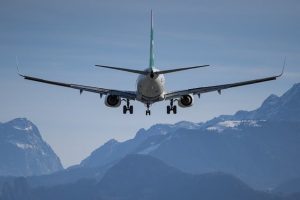
Oil isn’t limited to automotive engines. Whether it’s a small commuter plane or a wide-body commercial airliner, nearly all aircraft engines use it as well. Oil is typically added to new aircraft engines, and it’s replaced at specific intervals. Here are six facts about aircraft engine oil.
#1) Lubricates Moving Parts
Aircraft engines have many moving parts. As these parts rub against adjacent parts, they create friction. Oil, however, provides lubrication to minimize friction. It’s a slick and slippery liquid that, when applied to an aircraft engine, lubricates the engine’s moving parts and protects them from wear and tear.
#2) Provides Cooling
In addition to lubricating moving parts, oil provides cooling. Jet fuel burns at extremely hot temperatures of about 3,000 degrees Fahrenheit. If left unchecked, this heat may damage the engine itself or adjacent parts. But oil provides cooling to prevent heat-related damage. It absorbs heat produced by the engine and transfers it to a safe area.
#3) Mineral, AD and Synthetic Oils
There are three primary types of oil used in aircraft engines: mineral, ashless dispersant (AD) and synthetic. Mineral oil is the most common type. It’s made of refined petroleum. AD is also made of refined petroleum, but it features addictive chemicals to help collect soot and debris from inside the engine. Synthetic oil, such as MIL-PRF-23699 and MIL-PRF-23699, is not made from pure crude oil. Instead, it’s made from chemically modified substances.
#4) Requires Changing Every 25 to 50 Hours
While most cars and trucks can go 1,500 miles or more before needing an oil change, airplanes typically require an oil change every 25 to 50 hours of flight time. As previously mentioned, oil will collect soot and debris from inside the oil. It will also break down from the heat, making it less effective at lubricating and cooling the engine. Therefore, aircraft engine oil must be frequently changed.
#5) Airplanes Burn Oil
It’s also worth noting that, unlike most cars and trucks, airplanes typically burn oil. It’s a normal process that occurs from the heat and pressure inside of an airplane’s engine. The amount of oil an airplane burns will vary depending on the engine’s condition, flight time and other factors. Nonetheless, most airplanes burn a small amount of oil each time they fly, which is another why it’s important to change the oil regularly.
#6) Viscosity
Different types of engine oil have different viscosity ratings. Viscosity is a measurement of how well a substance like oil flows. The lower the viscosity rating, the easier it will flow. In airplanes, oil viscosity is important because it ensures the oil will flow in cold temperatures while still being thick enough to protect the engine from extreme heat.



